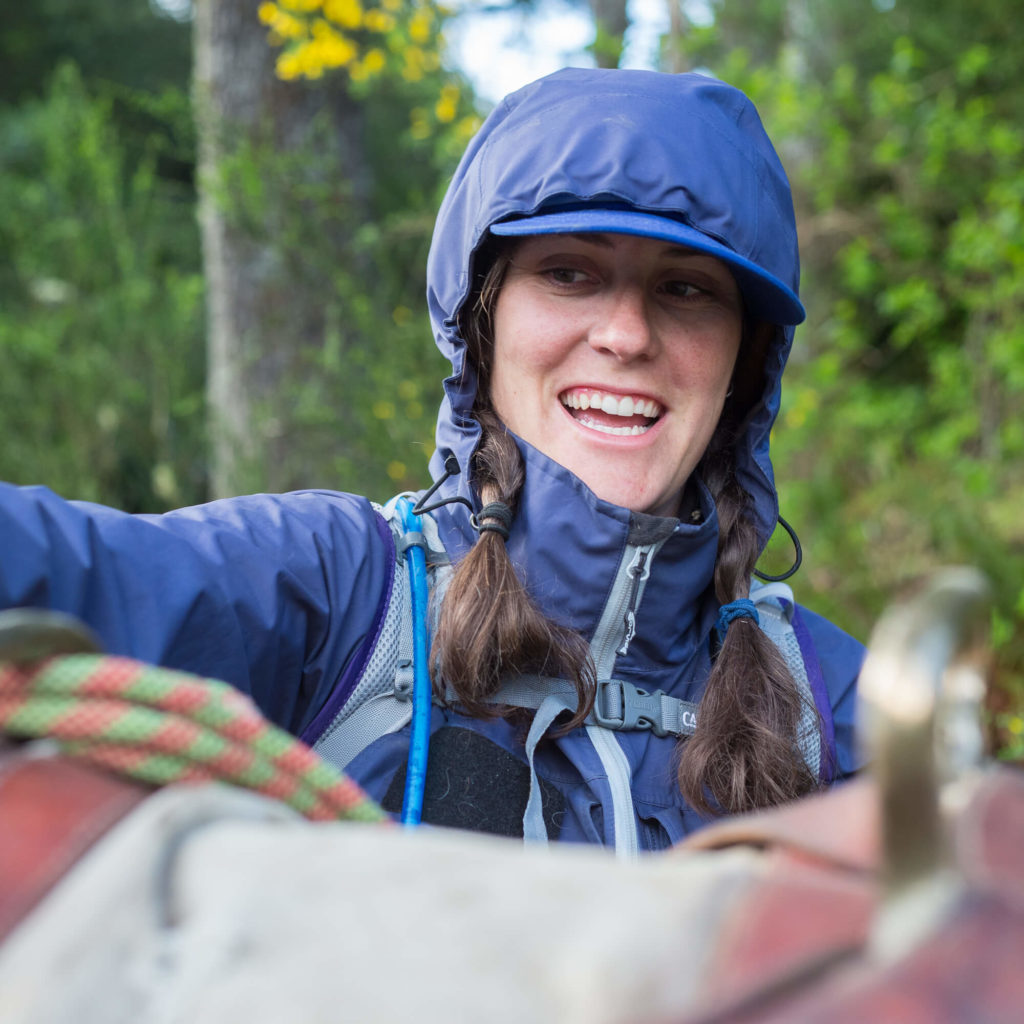Idaho’s wild salmon numbers have plummeted in recent decades. I wasn’t aware of this until I heard about three Sun Valley women embarking on a 900-mile horseback journey up the Columbia, Snake, and Salmon River; from the Pacific Ocean to Stanley, Idaho.
Their journey took 50 days and had one goal: To draw attention to Idaho’s dwindling salmon numbers.
I was lucky enough to sit down with one of the riders, Kat, and learn more about the current obstacles the salmon face, along with ways to help.

Kat Cannell, with Ride for Redd. Photo courtesy of John Webster
Here is our discussion and what she recommends for passionate readers.
Why is salmon important to central Idaho?
“Salmon are a keystone species. This means that they’re not just affecting the river; their impact goes far beyond. Salmon’s nutrients are found in the dirt and grass along the riverbed, which deer consume. Then mountain lions and other predators eat deer. It is a complex ecosystem. Salmon’s DNA has been found in Ponderosa trees along the riverbed as well as high up in the Sawtooth Mountains.
The salmon are also vital to our economy, culture, and spirit. Salmon has been vital to the Pacific Northwesterners livelihood for thousands of years. We respect and value the fish and their journey to get to central Idaho.”
Why are salmon numbers dropping?
“That’s a huge answer—but I can summarize it with human impact.
There are two main killers—dams along the Columbia and Snake River and commercial fishing in the ocean.
Fish ladders do an okay job, but every dam loses a tremendous amount of fish.” (90% of fish that comes to each dam die.)
What can readers do?
“It isn’t about signing a single petition. It’s not about regulating commercial fishing. Donating is not what’s going to save the salmon.
I met a man on my journey who summed it up perfectly– it’s going to take a revolution.
It’s going to take a revolution
“This is a lot greater than what people realize. When people ask me, I encourage them to get passionate and stay passionate. It sounds daunting, but that’s my point. People aren’t getting passionate about things, and they’re not getting involved. And we’re losing precious things in nature.
Realistically what you can do it get involved with Idaho Rivers United. Don’t donate once, but get on their mailing list and stay current. Vote for those in office who care. If that doesn’t happen, nothing will change.
Visit Idaho Rivers United – they will be able to direct the passionate public.
Can I still eat salmon?
“Yes! I love eating salmon. I support it. If it weren’t for people who eat and fish, then there wouldn’t be anyone who cared about this. Salmon lovers have the most at stake. At some point, we could see salmon being $50/lbs. If you like salmon, you should be fighting for this.
What should I look for when buying salmon?
“Make sure that it’s sourced from a commercial fishery that is striving to be sustainable. To learn more about that, Patagonia has a new line of food—Patagonia Provisions. They are a great model for sustainably sourced salmon.
What was the most surprising thing about your recent Ride for Redd?
“The most surprising thing was realizing how people are very focused on exactly where they’re at—how the river impacts them. They are not focused on upstream and downstream. If people could open their minds and see the entire river as one, we would have a better chance at uniting.

Photo courtesy of John Webster
To learn more about how you can help Idaho’s salmon, visit Red for Redd and Idaho Rivers United, and sign up for updates. You can also donate to Ride for Redd’s film here. To support the local Idaho economy and enjoy wild salmon from the source, visit Ketchum, Idaho.





